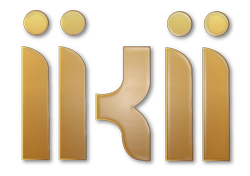Review
Teaching Philosophy for Children: Inspiration from Winnetka Plan
More Detail
1 Department of International Education, The Education University of Hong Kong, Hong Kong 999077, China2 Department of International Education, The Education University of Hong Kon3 Center of Teacher Education, Minghsin University of Science and Technology, Hsinchu 30401, Taiwan* Corresponding Author
International Journal of Social Sciences and Artistic Innovations, 5(4), December 2025, 8-15, https://doi.org/10.35745/ijssai2025v05.04.0017
Submitted: 26 August 2024, Published: 23 November 2025
OPEN ACCESS 5 Views 3 Downloads
ABSTRACT
Children need to be encouraged to create and learn based on their interests and abilities. In particular, children from different backgrounds must have access to learning methods that are tailored to their distinct cultural, socioeconomic, and developmental environments. This necessity underscores the importance of adaptive teaching for children’s learning. Through theoretical analysis, we examined the teaching philosophy of the Winnetka Plan to enhance the quality of adaptive teaching for children’s learning. The findings indicate that the development of Winnetka’s teaching philosophy was influenced by Carleton Wolsey Washburne’s life experiences. This approach posits that every child is capable of autonomously engaging in adaptive teaching. This emphasizes the assessment of students’ readiness to learn and supports the examination of children’s learning interests through the design of personalized record cards. The principles of the Winnetka Plan underscore its adaptive teaching philosophy and offer insights for teachers implementing teaching strategies for children’s learning. Hence, democratic education is essential for children.
CITATION (APA)
Lin, J. C., & Shih, Y. H. (2025). Teaching Philosophy for Children: Inspiration from Winnetka Plan. International Journal of Social Sciences and Artistic Innovations, 5(4), 8-15. https://doi.org/10.35745/ijssai2025v05.04.0017
REFERENCES
- Beatty, J. E., Leigh, J. S. A., and Dean, K. L. (2009). Philosophy Rediscovered: Exploring the Connections Between Teaching Philosophies. Educational Philosophies, and Philosophy. Journal of Management Education, 33(1), 99–114. https://doi.org/10.1177/1052562907310557
- Center for Educational Innovation at University of Minnesota. (2024). Writing your teaching philosophy. Available online: https://cei.umn.edu/teaching-resources/writing-your-teaching-philosophy/ (accessed on May 30, 2024).
- Drew, C. (2023). 59 Teaching Philosophy Statement Examples. Available online: https://helpfulprofessor.com/teaching-philosophy/ (accessed on May 30, 2024).
- Huang, J. J., and Chang, C. J. (2010). Make learning more successful: Ideas and strategies for adaptive curriculum and instruction. Curriculum and Instruction Quarterly, 13(3), 1–22.
- Kao, P. C. (2006). Adaptive teaching concepts and implementation strategies. Educational Materials and Research, 69, 262–274.
- Li, Y. X., and Liu, Z. Q. (2024). Research on individualized Chinese teaching based on adaptive learning system. SHS Web of Conferences, 187, 01028. https://doi.org/10.1051/shsconf/202418701028
- Li, Y. Y. (1997). The principles and implementation of adaptive teaching. In Principles of teaching. Taipei, Taiwan: Yuan-Liou. pp. 195–214. https://www.books.com.tw/products/0010390089
- Meyer, A. (1988). Carleton W. Washburne 1889–1968. Childhood Education, 64(5), 299–301.
- Ngene, N. C. (2023). Teaching philosophy in a teaching portfolio: Domain knowledge and guidance. Advances in Medical Education and Practice, 14, 1231–1248. https://doi.org/10.2147/AMEP.S428897
- Oellers, M., Junker, R., and Holodynski, M. (2024). Individual learning paths mastering teachers’ professional vision. Frontiers in Education, 9, 1305073. https://doi.org/10.3389/feduc.2024.1305073
- Shih, Y. H. (2018a). Towards a pedagogy of humanizing child education in terms of teacher-student interaction. Journal of Education and Learning, 7(3), 197–202. https://doi.org/10.5539/jel.v7n3p197
- Shih, Y. H. (2018b). Some critical thinking on Paulo Freire’s critical pedagogy and its educational implications. International Education Studies, 11(9), 64–70. https://doi.org/10.5539/ies.v11n9p64
- Shih, Y. H. (2018c). Rethinking Paulo Freire's dialogic pedagogy and its implications for teachers’ teaching. Journal of Education and Learning, 7(4), 230–235. https://doi.org/10.5539/jel.v7n4p230
- Smithers, L. E., and Mazzei, L. A. (2024). Minor pedagogy: Education as continuous variation. Educational Philosophy and Theory, 56, 1–10. https://doi.org/10.1080/00131857.2024.2336021
- Tra, P. T. (2023). The case method for teaching philosophy. European Journal of Theoretical and Applied Sciences, 1(6), 1089–1095. https://doi.org/10.59324/ejtas.2023.1(6).105
- Wang, C. Y. (2011). Strategies to cope with the heterogeneity of student sources in universities and colleges and their adaptive teaching preferences. Journal of Humanities and Society, 2(7), 1–27.
- Washburne, C. (1926). The philosophy of Winnetka curriculum. In The foundations and technique of curriculum-construction I: Curriculum-making: Past and present. New York, NY, USA: Arno Press and The New York Times. pp. 219–228.
- Washburne, C. (1932). Adjusting school to the child. New York, NY, USA: World Book Co.
- Washburne, C. (1940). A living philosophy of education. New York, NY, USA: John Day Co.
- Washburne, C. (1952). What is progressive education? A book for parents and others. New York, NY, USA: John Day Co.
- Washburne, C. and Marland, S. P. (1963). Winnetka: The history and significance of an educational experiment. Englewood Cliffs, NJ, USA: Prentice-Hall.
- Washburne, C., Vogel, M., and Gray, W. S. (1926). The Winnetka Plan: Curriculum development and implementation. Winnetka, IL, USA: Winnetka Educational Press.
- Yakovleva, N. R. (2024). Teacher's preparation for implementing “Winnetka Plan”: Washburne's lessons for modern pedagogical education. Available online: https://www.europeanproceedings.com/article/10.15405/epes.20121.13 (accessed on May 26, 2024).

 OPEN ACCESS
OPEN ACCESS

 The articles published in this journal are licensed under the CC-BY Creative Commons Attribution International License.
The articles published in this journal are licensed under the CC-BY Creative Commons Attribution International License.